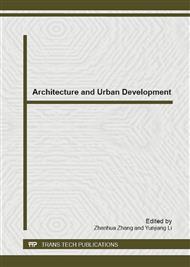p.233
p.237
p.241
p.247
p.255
p.260
p.264
p.268
p.273
Numerical Simulation Studies of Plant Communities’ Effects on Outdoor Thermal Environment in Residential District
Abstract:
The outdoor thermal environment has been worsening in recent years due to urban heat-island phenomenon accompanying fast development of urbanization. Many researches have been conducted into the effects of plants on the outdoor thermal environment by field experiment or numerical simulation. However, the plant communities’ effect on outdoor thermal environment has not established by numerical simulation yet. In this paper, the effect of plant communities on outdoor thermal environment was analyzed by numerical simulation. Moreover, the relationship between plant communities and outdoor thermal environment was also studied. The conclusion could be drawn as follows: 1) Platanus orientalis Community, Sophora japonica Community and Magnolia denudate Community have more obvious cooling effect. The shrub communities had a worse cooling effect and the grass was the worst; 2) there was a trend of decline of cooling effect with the decrease of plant communities ’canopy closure and leaf area index.
Info:
Periodical:
Pages:
255-259
Citation:
Online since:
November 2012
Authors:
Price:
Сopyright:
© 2012 Trans Tech Publications Ltd. All Rights Reserved
Share:
Citation:


